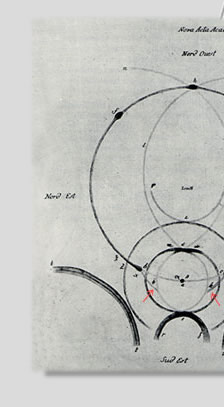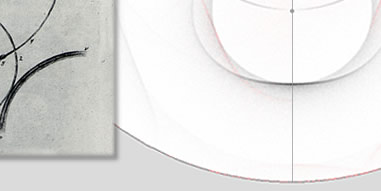Tobias Lowitz observed
this famous display at St. Petersburg June 18, 1790. It lasted for several
hours and to some extent his drawing is a composite. Lowitz drew a number
of rare arcs but none so controversial as those marked with red arrows.
They extend downwards from each sundog to join the 22° halo
and were subsequently named after him.
The non-Lowitz halos agree reasonably well with the all-sky
HaloSim4 simulations made for the display's peak at ~10am when the
sun was 51° high.
Outwards from the sun Lowitz shows a 22° halo and circumscribed halo
then a 46°
halo. There is a complete parhelic
circle with
two 120°
parhelia. Below the sun Lowitz shows two prominent infralateral
arcs. The lower sunvex arc tangent to the 22 degree halo is puzzling.
It could be a lower tangent arc seen
earlier when the sun was lower. In the same sense, Lowitz shows a circumzenithal
arc that could only have been seen earlier in the morning. Wegener arcs
extend from the top of the circumscribed halo over the sky to the anthelion.
Greenler's book has a very good
account of the display.
Lowitz shows only the lower Lowitz arcs. Why? It is odd that his
otherwise careful drawing omits the upper ones. Perhaps he missed them?
There is another explanation. The left hand simulation
used plate crystals with classical Lowitz orientations - i.e. taking
all rotational positions around the Lowitz axis. The upper Lowitz arcs,
shown in red, are as prominent as the lower and both arcs are relatively
weak near to the parhelia.
The right hand simulation used plate crystals with limited rotation. The
plates were allowed to oscillate about their usual horizontal position
with a Gaussian distribution of Lowitz tilts of standard deviation 20°.
At fairly high sun two things then happen, (1) the lower arc becomes
relatively stronger close to the parhelion and (2) the upper arc becomes
weak and diffuse eventually dissappearing altogether when the sun is
higher. If the plate crystals were similarly oriented at St. Petersburg,
Lowitz would have been unlikely to see an upper arc when the sun was
50°
high or more.
|






